Poco F2 Pro unveiled with S865 chipset, 6.67" Super AMOLED screen and 64MP camera for €500
The Poco F1 was a rare beast, an actual example of a “flagship killer”. Now, almost two years later it is finally time for a sequel, after the detour named Poco X2 – a mid-ranger that was based on the Redmi K30. Actually, it seems it was a change in course rather than a detour as the new model is essentially a rebadged Redmi K30 Pro.
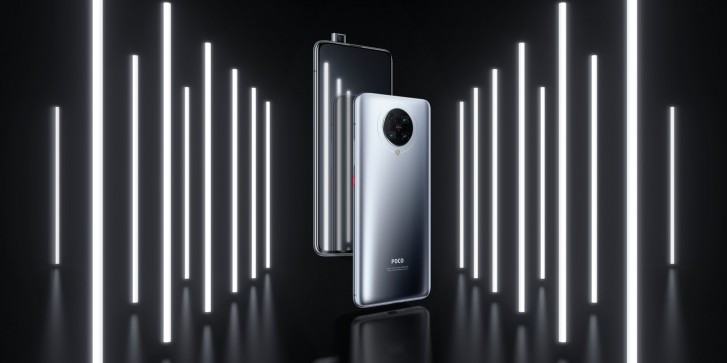
The Poco F2 Pro does bring a long list of improvements compared to the F1, starting with the latest chipset. The Snapdragon 865 is the best chip from Qualcomm yet and one of the first to feature updatable GPU drivers, which might improve the phone’s longevity.
A lot of emphasis was placed on the LiquidCool 2.0 tech, which has three layers: graphite, graphene and, finally, the "Super VC". That vapor chamber is larger than competing phones, which Poco says will enable more efficient cooling.
The F2 Pro will run Android 10 out of the box with Poco Launcher 2.0. Dark mode is available, a must have on AMOLED screens.
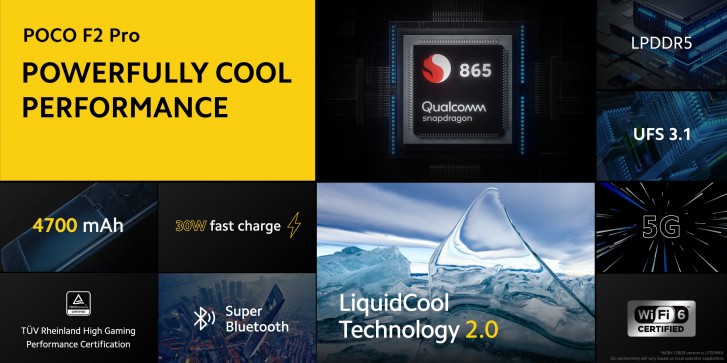
Storage now starts at 128GB (twice as much as before) and there’s also a 256GB option for those who want more. Plus, this is fast UFS 3.1 storage, up from 2.1. This year it’s actually something to consider as Xiaomi has axed the microSD slot.
Besides the new chipset, Poco F2 Pro’s new camera setup may be what pushes die-hard Poco fans to upgrade. The main camera has a 1/1.72” sensor with 64MP resolution, with pixel binning that works out to 16MP photos with 1.6µm effective pixels.

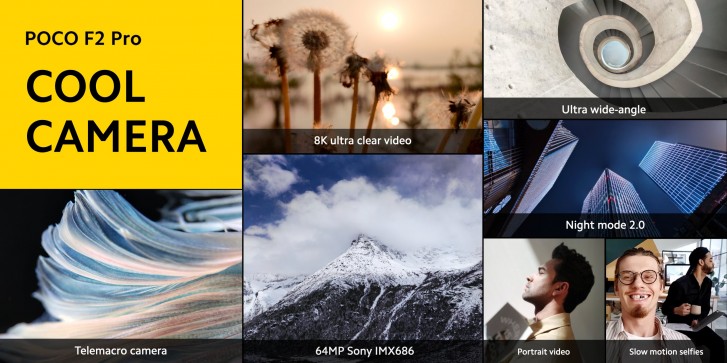
The phone can push in closer with the 2x zoom camera, which has a 5MP sensor and 50mm lens, or go wide with a 13MP camera. There’s also a 2MP depth sensor. There's no dedicated macro camera, the tele cam takes care of that (it's a tele macro, actually, letting you shoot at a comfortable 3-7cm distance).
The more powerful chipset enables 8K recording at 30fps (you probably want the 256GB phone if you’re going to shoot in 8K). Also, 4K videos can now be recorded at 60fps.
The final camera is on the front - a 20MP shooter on a motorized pop-up mechanism. This leaves the 6.67” screen completely unblemished. This year it’s a Super AMOLED panel with HDR+ support, so you can expect a boost in image quality, even if the resolution remains at 1080p+. The switch to AMOLED also allowed the fingerprint reader to move below the screen.
The screen refreshes at a standard 60Hz, but the touch sampling rate has been amped up to 180Hz. The phone has Widevine L1 certificaiton, so it can play HD content from Netflix, Amazon Prime Video and other services.
6.67" Super AMOLED display with up to 1,200 nits of brightness
While Xiaomi skipped the microSD slot, it did leave the 3.5mm headphone jack intact – we know many of you don’t care for Bluetooth headphones. Although the phone does offer Bluetooth 5.1 with aptX HD.
Finally, we make our way to the battery – it’s bigger and faster than before. The capacity increased to 4,700mAh (from 4,000mAh) faster 30W charging (up from 18W).
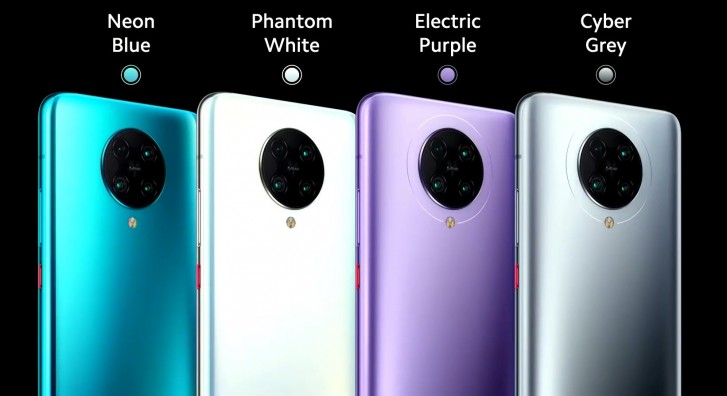
The Poco F2 Pro will be available online, starting at $500/€500 for the 6/128GB version. There's also a version with 8GB of RAM and 256GB storage for €600. The phone will be available at AliExpress and Gearbest first. You can pre-order it today, shipping should start on May 19 (a week from now).
It will come to other online distributors - from Amazon through Lazada and Shopee to JD and more. The phone will also sell through the official Poco.net site and the team is working on making the F2 Pro available in offline stores too.
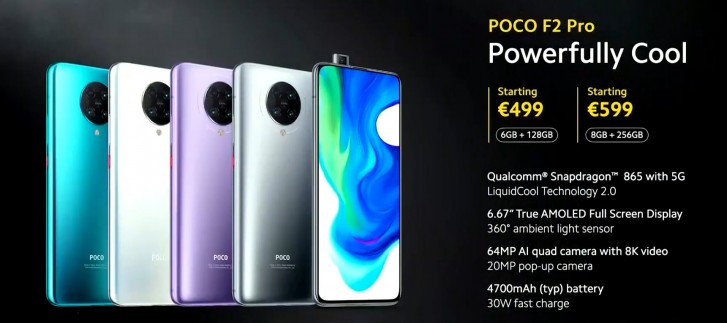
During the presentation, the Galaxy S20+ and OnePlus 8 Pro were often used for comparisons, two shining examples of Android flagships. Here's how the Poco F2 Pro compares against them:
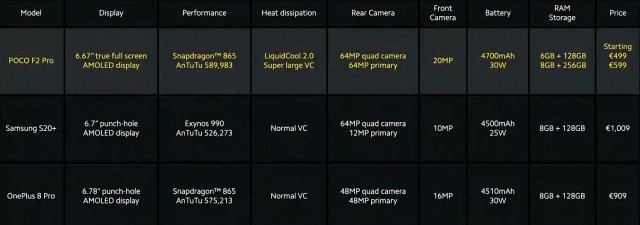
Comments
Post a Comment